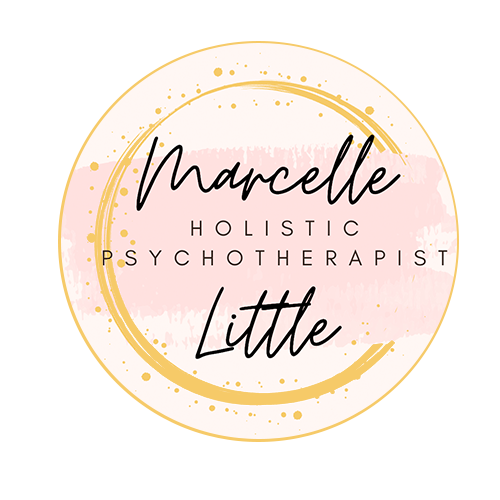Somatic Therapy: Yoga Nidra
When we relinquish our attempts to change the world or ourselves according to some belief about how we think things “should be,” insight and right action spontaneously arise to the surface of awareness. Then you will live in welcoming for its own sake because of the joy and freedom it brings.
~Miller, 2010, p. 34
According to the Merriam-Webster Online Dictionary, equanimity means “evenness of mind especially under stress” (“Equanimity,” 2019, para. 1) or balance. Clinical psychologist and founder of the Integrative Restoration Institute (i-Rest) Richard Miller (2010) has taught that at the core of who people are is equanimity; once individuals realize this and become truly awake, they can stay present regardless of their state of instability (pp. 19, 21). Similar to MBSR, Miller developed an institute and program based on Yoga Nidra:
Integrative Restoration, or i-Rest, is an adaptation of Yoga Nidra, a form of meditative self-inquiry from the teachings of yoga, which we engage for many reasons: to induce deep relaxation throughout the body and mind, eliminate stress, overcome insomnia, solve personal and interpersonal problems, resolve trauma, neutralize and overcome anxiety, fear, anger, and depression, as well as enter deep meditation in order to unravel the mystery of life and answer such questions as: “Who am I?” “Why am I?” “What is all of this?” and “What is enlightenment?” (p. 1)
After studying ancient Eastern teachings and “the best that western research has to offer” and through Miller’s own experience as a yoga teacher and clinical psychologist, he decided to adapt Yoga Nidra, calling it i-Rest, to integrate his own experiences (p. 4). He claimed that over the last half-century, many practitioners and yoga institutes worldwide have contemporized Yoga Nidra, often making it difficult to define (p. 4; Parker, Bharati, & Fernandez, 2013, p. 11). Miller (2010) contended the essence of Yoga Nidra is to realize “that your True Self, or true I-ness is an infinite and unqualified spacious Presence of Being in which everything, both waking and dream states, is born, unfolds, and dissolves” (pp. 19-20). According to Miller (2010), yoga is known as “union” and represents awakening of an individual’s “True Nature”; it is also the foundation of intuition as it has the capacity to remove interferences of misperceptions (p. 18). The practice supports the belief that pain comes from attachment to life that is predictable and consistent when everything around the person, including mind and body, is constantly in a state of flux (p. 19). According to Miller:
Yoga Nidra represents a paradox and is a play on the words, “sleep” and “awake” as it means “The Sleep of the Yogi,” and implies that the normal person is asleep to their True Nature through all states of consciousness—waking, dreaming, and deep sleep—while the yogi is one who is awake to and knows his or her True Nature across all states, even sleep. (p. 18)
A pilot study conducted by Pence, Katz, Huffman, and Cojucar (2014) examined iRest “and its ability to reduce symptoms associated with sexual trauma, including military sexual trauma (MST), in a sample of women seeking psychotherapy services at a Department of Veterans Affairs (VA) medical center,” suggesting that iRest was beneficial (p. 53).
The results indicated, “improved ability to relax; improved mood; being more aware of the present moment; improved awareness of and tolerance of negative thoughts, emotions, and sensations; and improved ability to generate and utilize pleasant thoughts and feelings” (p. 60). Research conducted by Pence et al. (2014) found iRest an appropriate treatment option, yet contended more research on iRest is needed (p. 60).
My first restorative yoga class at Naam Yoga in Santa Monica, CA in 2014 had a profound impact on me. So much so, that I continued learning about this practice, eventually studying Richard Miller and Jillian Pransky (via Yoga Works). This is an intervention I utilize quite often in my practice, as it allows the mind to detach from painful emotional states and cultivate awareness of sensations, which are the building blocks for expanding our window of tolerance and resiliency model.
© 2019 Marcelle Mae Little All rights reserved
References:
Miller, R. (2010). Yoga nidra: A meditative practice for deep relaxation and healing. Boulder, CO: Sounds True.
Parker, S., Bharati, S. V., & Fernandez, M. (2013). Defining yoga nidra: Traditional accounts, physiological research and future directions. International Journal of Yoga Therapy, 23(1), 11-16.
Pence, P, G., Katz, L. S., Huffman, C., & Cojucar, G. (2014). Delivering integrative restoration-yoga nidra meditation (iRest) to women with sexual trauma at a veteran's medical center: A pilot study. International Journal of Yoga Therapy, 24, 53-62.
